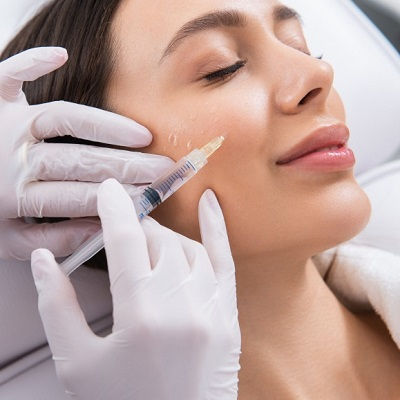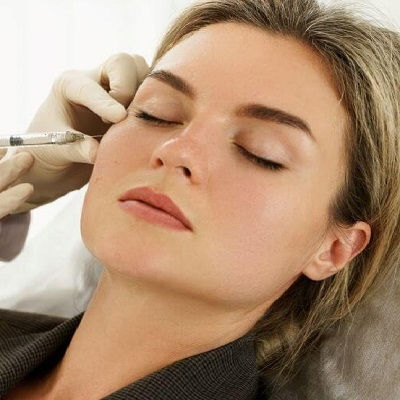Bruising After Cheek Fillers? Here’s What to Do
- aliza khan
- Apr 11
- 6 min read
Cheek fillers have become a leading choice for non-surgical facial contouring, offering volume restoration, structure enhancement, and a youthful lift. While the treatment is quick, effective, and relatively low-risk, minor side effects like bruising are common. If you’re considering visiting a Cheek Fillers Clinic in Muscat, it's helpful to understand how to manage post-treatment bruising and what steps can minimize it. Whether you're preparing for your first session or navigating the healing process, this guide covers everything you need to know to ensure smooth, confident results.
Bruising, though temporary, can feel frustrating—especially if you're eager to enjoy the full effect of your filler treatment right away. It’s a natural response to injections and part of the healing journey for many. However, with proper aftercare, thoughtful planning, and informed expectations, you can reduce downtime and help your skin bounce back quickly. Choosing an expert provider from a trusted clinic that specializes in cheek fillers in Muscat plays a significant role in both outcome and recovery.
Why Does Bruising Happen After Cheek Fillers?
Understanding why bruising occurs can help ease concerns and provide insight into how to minimize it. When fillers are injected into the cheek area, a fine needle or cannula enters the skin and underlying tissue. Although techniques are advanced and tools are designed for safety, tiny blood vessels beneath the surface can sometimes be disturbed, leading to a visible bruise.
Factors that contribute to post-filler bruising include:
Skin sensitivity and vascularity – Thin skin or close-to-surface capillaries increase bruising risk
Medications and supplements – Blood thinners, aspirin, and even vitamin E can exacerbate bruising
Injection technique – Even in the hands of a skilled injector, bruising may occur if vessels are inadvertently nicked
Aftercare habits – Rubbing the area or engaging in strenuous activity post-treatment can worsen bruising
A good cheek filler provider in Muscat will take steps to minimize trauma and ensure the most precise placement to reduce the likelihood of bruising.

Is Bruising Normal or a Sign of Something Wrong?
In most cases, bruising is completely normal and nothing to worry about. It appears as mild skin discoloration—blue, purple, or reddish—near the injection site and usually fades within a few days to two weeks. You may also experience some swelling or tenderness.
However, it’s important to recognize when a symptom needs attention. Seek medical advice if you notice:
Severe pain that worsens over time
Extensive or expanding bruises far from the injection site
Skin discoloration accompanied by a firm lump or blanching
Signs of infection such as heat, pus, or fever
While such complications are rare, working with a reliable cheek fillers clinic in Muscat will ensure proper care, safety protocols, and follow-up support if needed.
How to Prevent Bruising Before Your Appointment:
Prevention begins before your treatment. Several simple habits and preparations can significantly reduce the chance of post-injection bruises:
Avoid Blood Thinners (with Approval):
A few days before your appointment, it's recommended to avoid medications and supplements that affect clotting. These include:
Aspirin and NSAIDs (ibuprofen, naproxen)
Fish oil, flaxseed, or omega-3 supplements
Vitamin E, ginkgo biloba, garlic pills
Alcohol (especially 24–48 hours before)
Load Up on Arnica and Bromelain:
Natural supplements like arnica and bromelain can help reduce bruising and swelling. Start taking them 1–2 days before your treatment, unless advised otherwise by your provider.
Stay Hydrated and Avoid Caffeine:
Well-hydrated skin is more resilient and less prone to trauma. Avoid excessive caffeine, which can dehydrate your skin and affect circulation.
Choose the Right Timing:
Plan your appointment at least 2 weeks before any important events. This gives your skin plenty of time to settle and heal without pressure.
Aftercare Tips to Reduce Bruising and Swelling:
The way you care for your skin post-procedure has a big impact on the healing process. Follow these aftercare guidelines:
1. Ice the Area Gently:
Apply a cold compress or ice pack (wrapped in cloth) to the treated area for 10–15 minutes at a time during the first 24 hours. This reduces blood flow to the site and minimizes swelling and discoloration.
2. Keep Your Head Elevated:
Avoid lying down for at least 4 hours post-treatment. Sleep with your head slightly elevated the first night to discourage swelling.
3. Avoid Touching or Massaging:
Let the filler settle naturally. Massaging the area may not only increase bruising but could also shift the product placement.
4. Say No to Heat and Exercise for 48 Hours:
Avoid saunas, steam rooms, and strenuous workouts, as increased circulation can worsen bruising. Stick to light activity and stay cool.
5. Go Makeup-Free for the First Day:
Give your skin a break. Wait at least 24 hours before applying makeup to avoid contamination or irritation.
6. Use Arnica Gel or Cream:
Topical arnica can help speed up bruise recovery. Apply it gently as directed, starting the day after your procedure.
7. Protect Skin from the Sun:
Sun exposure can darken bruises and slow healing. Use SPF and stay shaded to protect the delicate post-filler area.
How Long Will the Bruising Last?
Most bruises from cheek fillers fade within 3 to 10 days. The intensity and duration can vary based on individual healing, injection depth, and aftercare. In some cases, minor discoloration may persist slightly longer but will resolve on its own.
Here’s a general healing timeline:
Day 1–2: Mild redness, swelling, and early bruising may appear
Day 3–5: Bruising is most visible, but swelling begins to subside
Day 6–10: Discoloration fades, final results become more noticeable
Week 2+: Most signs of treatment are gone; cheeks look natural and sculpted
When working with an experienced clinic specializing in cheek fillers in Muscat, expect guidance and check-ins during this timeline to ensure optimal recovery.
Covering Bruising with Makeup:
Once the initial 24-hour period has passed and any open areas have healed, it’s safe to use makeup to cover bruising. Here’s how to conceal like a pro:
Start with a soothing primer to smooth the skin
Use a yellow or peach-toned color corrector to cancel out purple or blue tones
Layer on a light, hydrating foundation
Tap, don’t rub, concealer into the skin to avoid further irritation
Set with powder, especially in humid conditions, for long-lasting coverage
Makeup should be removed gently at night to avoid disturbing sensitive skin.
Can Bruising Indicate Poor Technique?
Not necessarily. Even in the best hands, bruising can occur due to individual anatomy and skin characteristics. However, consistent or severe bruising may indicate that the injector is not using advanced techniques or appropriate tools. That's why selecting a reputable cheek fillers clinic in Muscat with skilled aesthetic practitioners is crucial for a comfortable experience and elegant outcome.
Long-Term Care and Skin Health After Fillers:
Cheek fillers do more than just enhance appearance; they influence how you care for your skin long term. Here’s how to maintain your results and support ongoing skin health:
Hydrate regularly – both internally and with skincare
Incorporate antioxidants into your skincare to protect against environmental stressors
Avoid smoking, which accelerates collagen breakdown and affects circulation
Consider complementary treatments like skin boosters or gentle facials
Return for touch-ups only when necessary to maintain a natural look
Keeping in touch with your provider helps adjust your aesthetic plan as your facial structure or skin condition evolves.

How to Know When the Bruising Is Gone—and the Results Are In:
True filler results take time to reveal themselves. While initial changes are noticeable, full effects become apparent after swelling and bruising subside completely—usually by the second week. At this point, the cheeks appear lifted, fuller, and beautifully contoured. You’ll enjoy:
A refreshed, more youthful facial profile
Improved cheekbone definition
Subtle lift in lower facial areas
More even transitions between facial features
These results are what make cheek fillers a favorite among both first-timers and returning patients.
Cheek Filler Myths and Facts: Clearing the Confusion:
Still uncertain about cheek fillers and their side effects? Let’s dispel some myths:
Myth: Bruising always means something went wrong.Fact: Bruising is common and usually harmless, especially in sensitive facial zones.
Myth: Only people with hollow cheeks need fillers.Fact: Fillers enhance natural contours, not just correct volume loss.
Myth: The results will look fake.Fact: When performed by a skilled professional, results are natural, balanced, and elegant.
Myth: Fillers are permanent.Fact: Most fillers dissolve over 9–18 months, offering flexibility and adaptability.
Final Thoughts:
Bruising is a small, temporary hurdle on the path to beautifully sculpted cheeks. With proper preparation, aftercare, and patience, your skin will recover smoothly—and the end result will be well worth the wait.
By choosing a reliable cheek fillers clinic in Muscat, you place your aesthetic goals in the hands of skilled professionals who understand how to minimize side effects while maximizing beauty. Trust the process, support your skin with care, and get ready to enjoy the elegant lift that only expertly placed cheek fillers can offer.



Comments